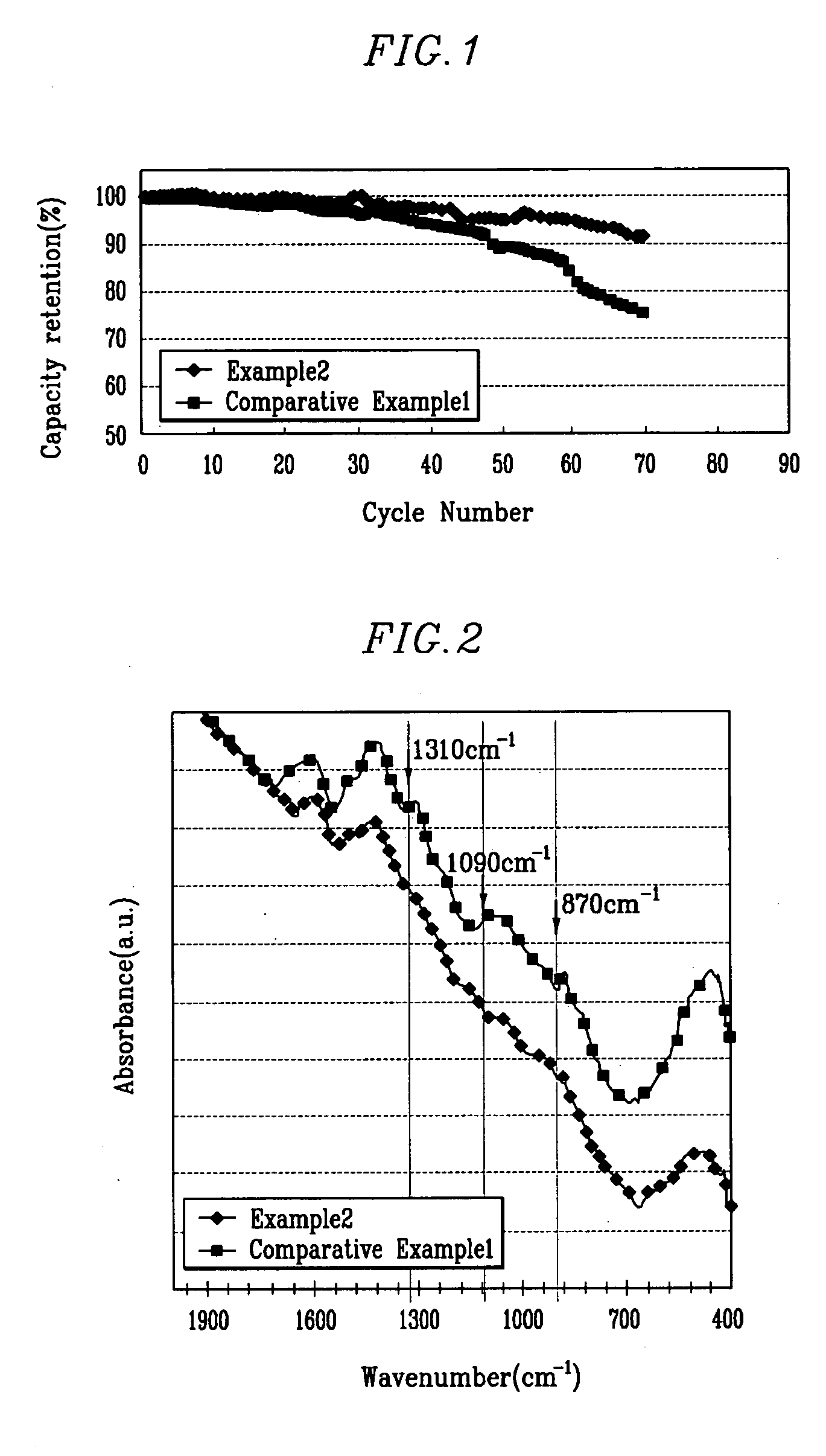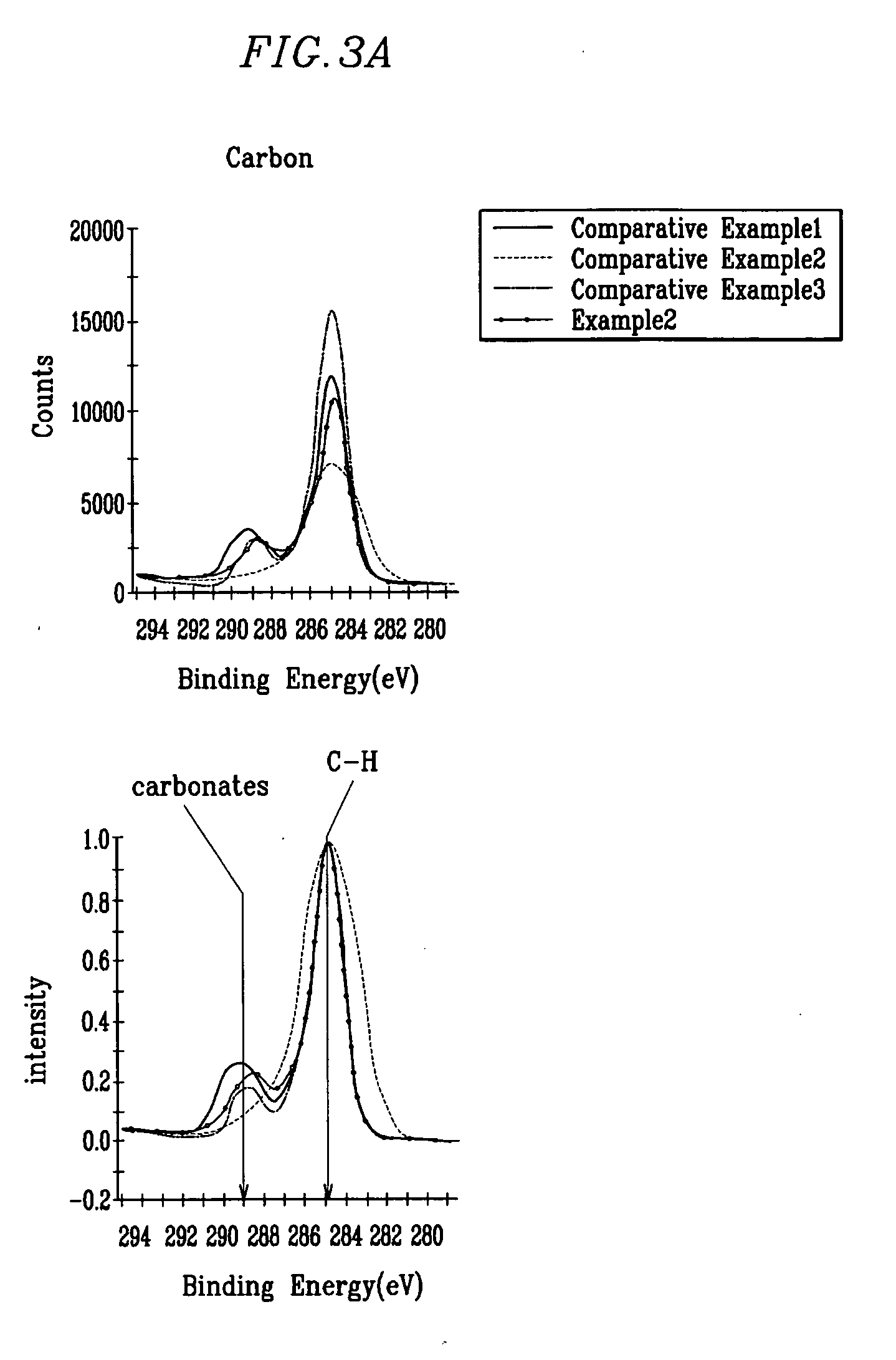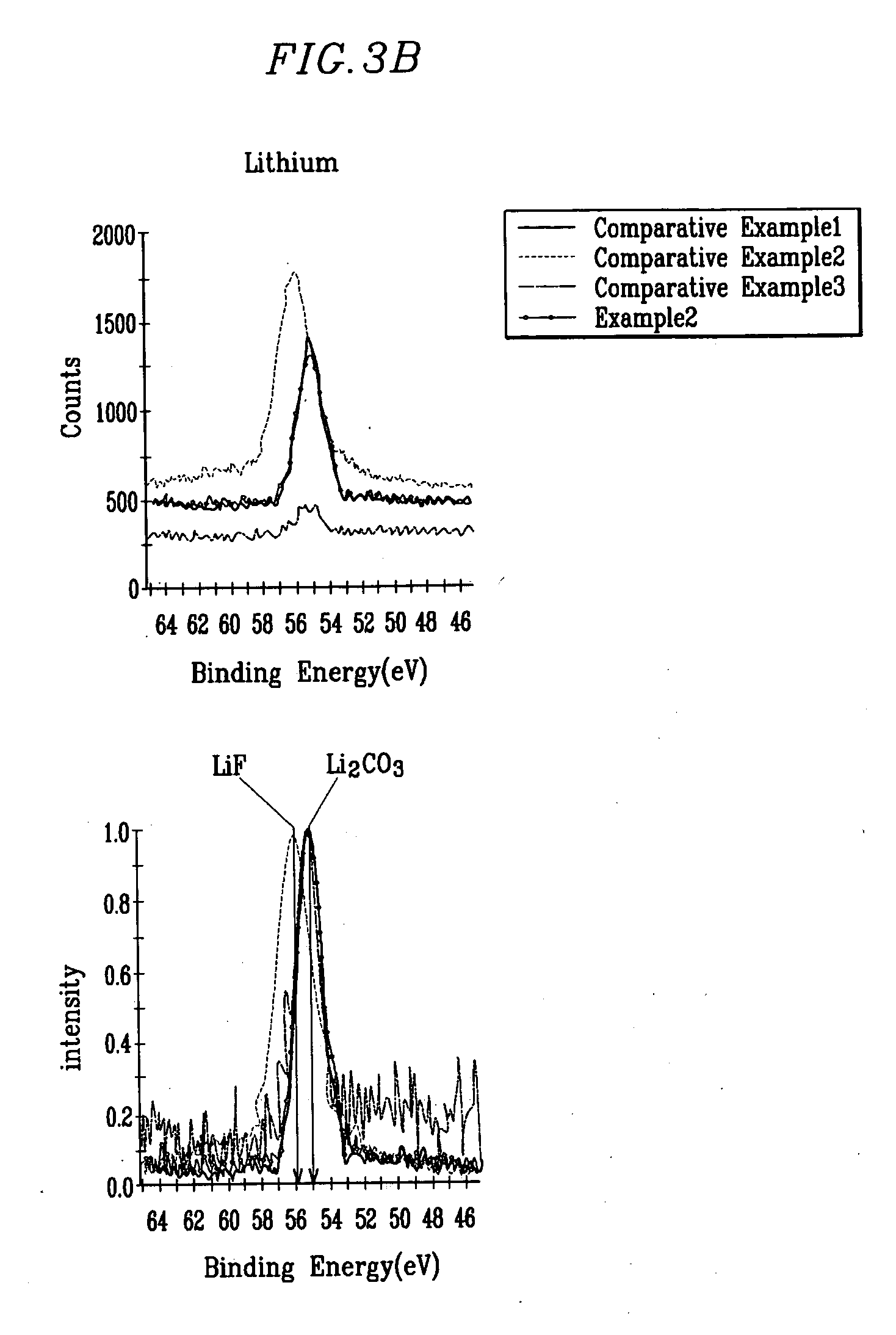Lithium secondary battery
a lithium battery, secondary battery technology, applied in the manufacture of non-aqueous electrolyte cells, cell components, final products, etc., can solve the problems of amorphous si-included alloys with higher initial capacity retention, lower cycle life characteristics, and slow reduction of crystallinity to produce amorphous alloys. , to achieve the effect of high capacity and improved cycle life characteristics
- Summary
- Abstract
- Description
- Claims
- Application Information
AI Technical Summary
Benefits of technology
Problems solved by technology
Method used
Image
Examples
examples 1 to 3
, AND COMPARATIVE EXAMPLES 1 TO 6
[0054] Electrolytes having composition shown in the following Table 1 were prepared.
[0055] In Table 1, the additive amount of the ethylene carbonate-based compound added to non-aqueous electrolyte is shown in units of % by weight (wt %), and the composition ratio of the non-aqueous organic solvent is shown in units of % by volume (vol %), and the amount of lithium salt based on the electrolyte is shown in units of mol / L. In Table 1, FEC, VC, EC, DEC, and LiBOB are abbreviations of monofluoroethylene carbonate, vinylene carbonate, ethylene carbonate, diethylcarbonate, and lithium bis(oxalate)borate, respectively.
TABLE 1Non-aqueousEthyleneorganiccarbonate-solventLithiumbasedNegative active material(volume %)saltcompound (wt %)Example 1SiAlFe Alloy powderECDECLiPF6FEC (0.1)(Si:Al:Fe = 52:28:20(30)(70)1.3Mweight ratio)Example 2SiAlFe Alloy powderECDECLiPF6FEC (3)(Si:Al:Fe = 52:28:20(30)(70)1.3Mweight ratio)Example 3SiAlFe Alloy powderECDECLiPF6FEC (10...
PUM
 Login to View More
Login to View More Abstract
Description
Claims
Application Information
 Login to View More
Login to View More - R&D
- Intellectual Property
- Life Sciences
- Materials
- Tech Scout
- Unparalleled Data Quality
- Higher Quality Content
- 60% Fewer Hallucinations
Browse by: Latest US Patents, China's latest patents, Technical Efficacy Thesaurus, Application Domain, Technology Topic, Popular Technical Reports.
© 2025 PatSnap. All rights reserved.Legal|Privacy policy|Modern Slavery Act Transparency Statement|Sitemap|About US| Contact US: help@patsnap.com



